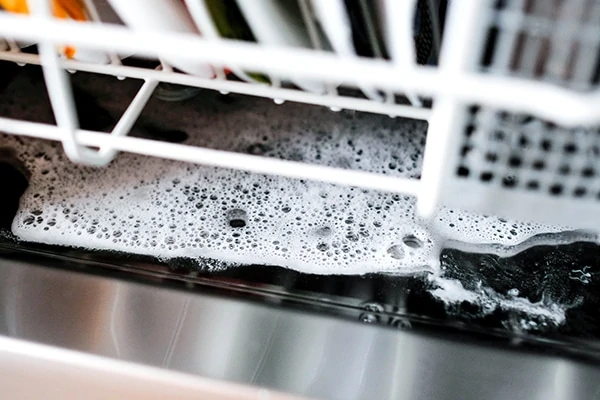Why Is My Dishwasher Flooding? 5 Common Problems and Solutions

You’ve just finished cooking and are ready to relax—until you notice water pooling around your dishwasher. It’s a frustrating issue many households face. From blocked filters to too much water inside the machine, several factors could be to blame. Let’s examine five common causes and how to address them.
1. Overfilling
Trying to fit every last dish into one cycle might seem efficient, but cramming too many items inside can backfire. When dishes are packed too tightly, water flow gets restricted, making it difficult for the appliance to rinse and drain effectively—sometimes causing water to spill out.
How to Fix It
Avoid cramming too many dishes into the machine; give each one enough space for water to move freely. Make sure nothing is stacked in a way that blocks the spray arms. Also, be careful with detergent: using too much or the wrong kind can cause overflow. For details specific to your model, it’s best to refer to the user manual.
2. Clogged Filter
Inside your dishwasher, a built-in filter traps leftover bits of food and oily residue to keep them from entering the drainage system. But when this filter isn’t cleaned regularly, buildup can form, preventing proper drainage. This backup of water can eventually spill over and create a mess.
How to Fix It
To keep things running smoothly, take time now and then to remove the filter and wash away any grime with warm, soapy water. If you’re unsure of its location, your appliance’s manual will point you in the right direction.
3. Damaged Door Components
When the dishwasher door doesn’t shut securely—whether due to a faulty latch or a worn-out rubber seal—water can leak out during the cycle. Even a small misalignment or tear in the gasket can lead to escaping moisture.
How to Fix It
Take a close look at the door latch to see if it’s loose, bent, or showing wear. Sometimes, a quick fix with a screwdriver can realign or tighten it. If it’s beyond repair, though, you’ll need to get a new latch and install it—or call in an SD Appliance Repair technician to handle the replacement.
If the rubber seal is causing issues, you might see cracks, warping, or other visible damage. A simple way to check the seal’s grip is by shutting the door on a sheet of paper—if it pulls out with little effort, the seal isn’t holding tight and needs replacing. To do that:
- Take out the worn gasket.
- Clean the area thoroughly with warm, soapy water.
- Gently heat the new gasket with a hair dryer to smooth out any bends.
- Press it into place along the door without overstretching it.
4. Dishwasher Isn’t Level
Proper alignment during installation is crucial—if the dishwasher is not level, water may collect unevenly inside and eventually spill out onto the floor.
How to Fix It
To check if your dishwasher is sitting evenly and fix it if it’s not, follow these steps:
- Unplug the appliance and shut off its water supply.
- Remove the lower access panel using a screwdriver.
- Set a level inside the tub—check both side-to-side and front-to-back.
- If the reading is off, adjust the legs beneath the unit: front/back for tilt, left/right for balance.
- Once it’s even, confirm the door shuts securely.
- Put the panel back in place, then reconnect power and water.
5. Cracked, Loose, or Clogged Drain Hose
Once your dishwasher finishes washing, the used water flows out through a hose. If this hose has any cracks or isn’t connected tightly, leaks can happen. Also, if the hose gets blocked, water can’t drain properly, causing it to build up inside and potentially spill onto the floor.
How to Fix It
Start by cutting the power and shutting off the water to your dishwasher. Next, unscrew and remove the panel at the base of the unit. Using a flashlight, check the hose for any cracks or damage—if you spot any, replacement is necessary. If the hose looks fine, gently wiggle it to see if it’s loose; tighten the connection if needed. To check for blockages, detach the hose clamp and pour water into the dishwasher base to see if it drains through. If it doesn’t, a clog is likely. Carefully clear the blockage by threading a bottle brush or a straightened wire through the hose—avoid piercing the hose walls. Once clear, reconnect the hose and panel, restore power and water, and run a hot rinse cycle to flush out any remaining debris.
When to Call a Pro
If you’ve gone through these simple fixes and your dishwasher still leaks, it might be time to get expert help. Problems with parts like the float switch or water inlet valve can be complex and are usually best handled by a trained SD Appliance Repair technician.
You Appliance Will Be Fixed!
in San Diego, CA
REQUEST SERVICE
Book a Repair Appointment

